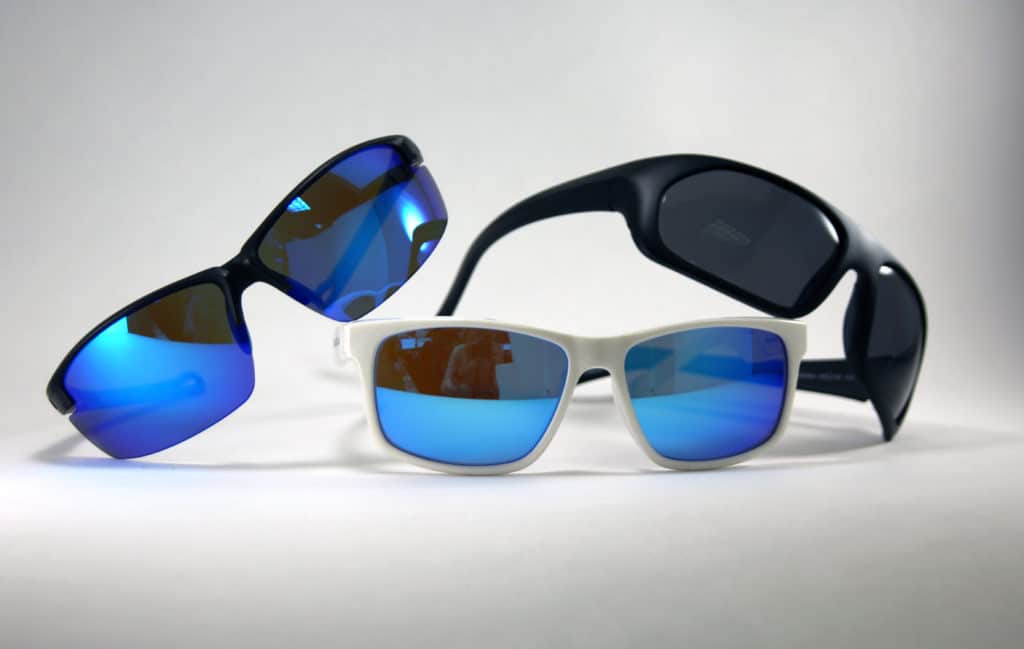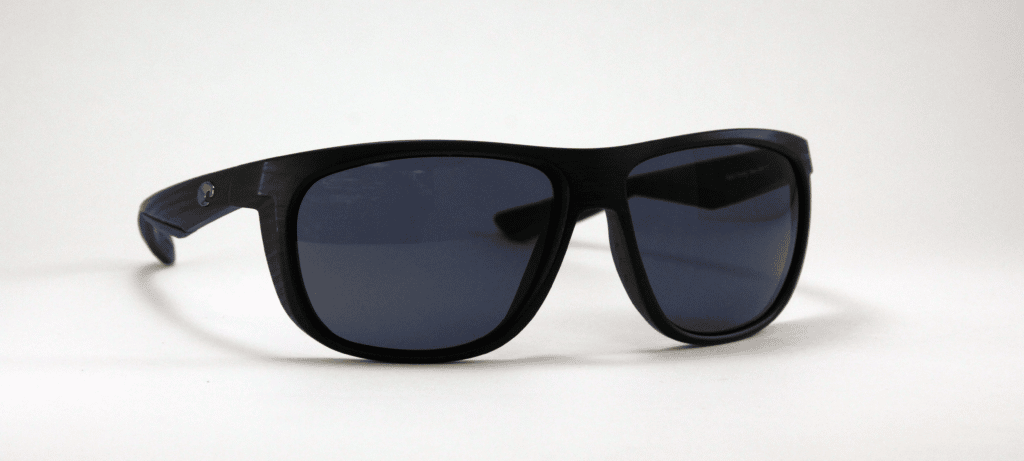
Every sailor needs a good pair of polarized sunglasses, but how do you choose the right ones? Do they all offer the same amount of protection? The CW editors tested more than 50 pairs to learn all about the latest and greatest in eyewear: large and small frames, glass and plastic lenses, sporty and casual styles. Here are the basics to help you narrow your options.
Lens Material
The vast majority of sunglasses made for sailing have some variation of a plastic, often polycarbonate, lenses, which are lightweight and resistant to shattering. Some plastic lenses have a polarized layer applied to them, while the polarization of others is integral to the lens. It would be harder to scratch off the polarization of the latter, but they are also more expensive. Glass lenses have incredible clarity and are more scratch-resistant than plastic, but are also heavier and a more expensive option, and could crack or shatter in a way that plastic would not.
Darkness
How much light comes through a lens is sometimes described using 4 categories. Category 0 is for clear lenses with no UV protection (technically, they allow 80% to 100% UV transmission — think safety goggles). Category 1 lenses allow 43% to 80% UV transmission and would only be used for low-light situations. Most sailing sunglasses will fall into category 3, which allows 8% to 18% UV transmission — these would be for general and bright conditions. Category 4, where you’d find glacier goggles, only allow 3% to 8% UV transmission and are too dark for use while driving. A couple of the sunglasses we tested had photochromic, or variable-transmission lenses. These start light and get darker when exposed to bright sun for a few minutes. Testers thought this feature would be great for continuous wear as lighting conditions changed, but they do take a few minutes to change colors when you go up on deck after being below or vice versa.

Tint
Lenses with a gray base tint tended to be a bit darker to look through and showed a true representation of colors. These would be best for use in full, bright sun. Some testers found gray lenses to be the most comfortable to look through because they don’t change the colors of what you’re looking at, while others found them too dark. Looking through lenses with a brown, copper or amber base tint made the world look brighter than looking through the gray tints, and contrast was more defined. Brown lenses are no less protective in terms of what percent of UV rays come through, even though the visual experience is different. Some testers preferred copper lenses because they could be used on bright but overcast days as well as sunny ones, while others thought the world looked too bright or brown. Rose-colored lenses had a similar effect to the amber tints; the variation of warm-tone lenses seemed to be a matter of personal preference.
Coatings
A few of the lenses tested had a mirrored coating on the front that is supposed to reduce the amount of glare that gets in to your eyes. Testers like the mirrored lenses for style points and some liked that you can’t see a wearer’s eyes through the lens, although there was a concern that the mirror coating shows scratches more quickly than non-mirrored lenses. Whether the mirror truly reflected more light was not so obvious to the wearers.
One type of coating that really did make a difference was the anti-glare coating on the back of some of the lenses. Particularly on flatter (less wrapped) frame styles, light could sometimes come in from the sides and show a distracting reflection of the wearer’s cheeks. Frames with a higher base curve (more wrapped) did not need this coating as much, nor did styles with wide arms. Many of the sunglasses had hydrophobic coatings to help water bead up and roll off. We didn’t specifically test whether this made a difference with salt spray or in a drizzle but like this idea. Likewise, we didn’t test the oil-resistant coating that helps some sunglasses fight the potential dangers of sunscreen and general grime, but like this feature as well.
Curvature
Base curve is the number used to describe how flat or wrapped a pair of glasses is on your face — technically it’s the radius of the circle formed by the inside of the lenses. We found frames with a base curve of 8 to be quite wrapped, and a base curve of 6 to be more flat, for example the Wayfarer styles. The more wrapped styles did a better job of cutting side glare.
We recently put some of the best sunglasses available to the test to find out the best pair of sunglasses for sailing. To find out some of our editors favorites, click here.








